Companion planting is a secret weapon for your organic garden! By pairing plants like tomatoes and basil, you’ll boost growth and flavor while sending pests packing. It’s like giving your garden a team of little superheroes! Plus, plants like clover fix nitrogen, rejuvenating your soil for luscious veggies. You create a vibrant ecosystem that thrives together, fighting off pests with nature’s charm. Stick around, and I’ll share more about which pairings will make your garden the envy of the neighborhood!
Benefits of Companion Planting
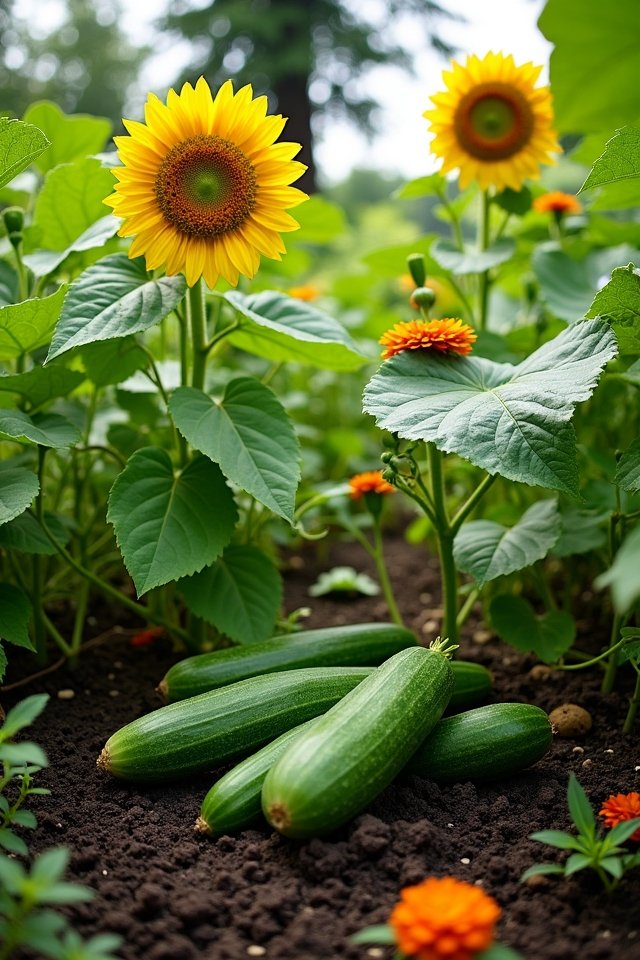
When you dig into the world of companion planting, you’ll discover a treasure trove of benefits that can transform your garden! Imagine bright, busy plants working together like a dynamic duo, creating plant synergy that boosts growth and deters pests. You’ll find that certain combos not only thrive but also enhance one another’s flavors—like tomatoes and basil in a culinary dance! Plus, with smart crop rotation, you prevent soil depletion and keep pesky weeds at bay, allowing your plants to flourish sustainably. It’s like giving your garden a teamwork pep talk! You’ll be amazed at how just a few thoughtful pairings can lead to vibrant growth and bountiful yields. Ready to release your inner plant whisperer? Let’s dig in!
Popular Companion Planting Combinations
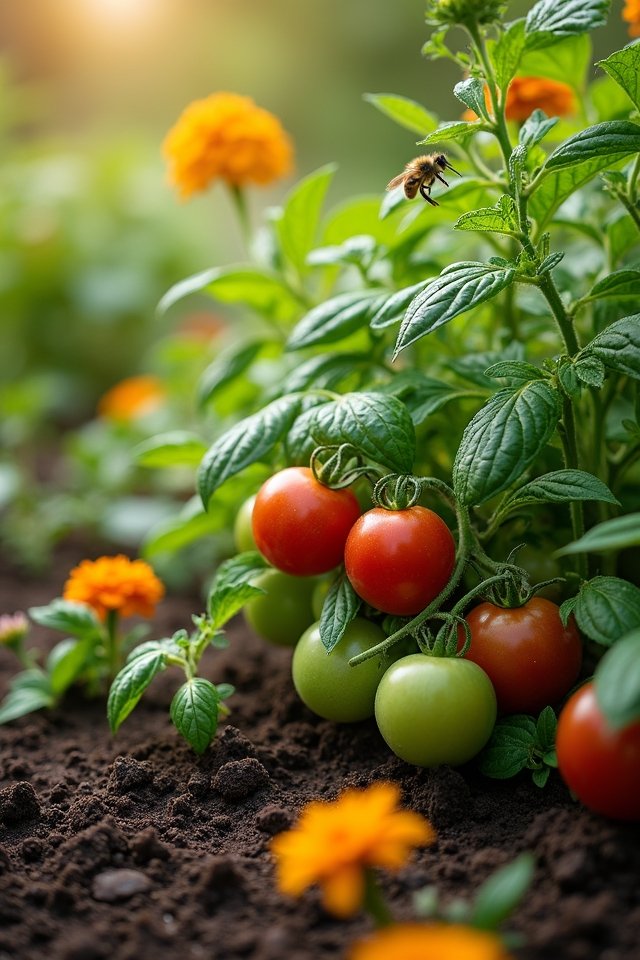
Ready to spice up your garden? Let’s explore some popular companion planting combinations that’ll make your plants sing! Pairing tomato and basil is a classic match made in gardening heaven. Basil not only enhances the flavor of tomatoes, but also wards off pesky pests. It’s like having a plant bodyguard!
Now, consider the carrot and onion duo. When planted together, onions can deter carrot flies, making sure your carrots grow big and sweet. Imagine crunchy, vibrant carrots without the worry of uninvited guests!
Enhancing Soil Health Through Companions
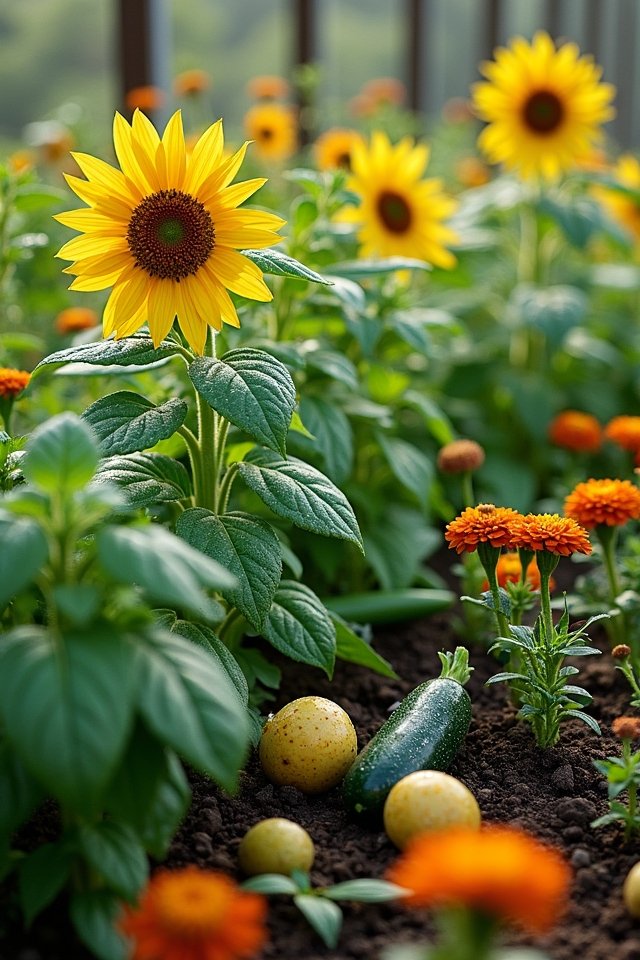
You might be surprised to learn that enhancing soil health is just as important as choosing the right plant combinations in your organic garden! Think of your soil as a living, breathing entity, bursting with potential. By using companion plants, you’re kickstarting nutrient cycling, which revs up the life in your garden. For example, when you plant clover alongside vegetables, it helps fix nitrogen—an essential nutrient—making your veggies thrive!
And guess what? This amazing partnership boosts microbial activity too! These tiny superheroes break down organic matter, transforming it into nutrition your plants just love. So, aren’t you excited to let your garden party with companions? Your soil will thank you, blooming like it’s on a botanical vacation! Who knew healthy soil could be this fun?
Pest Control and Biodiversity
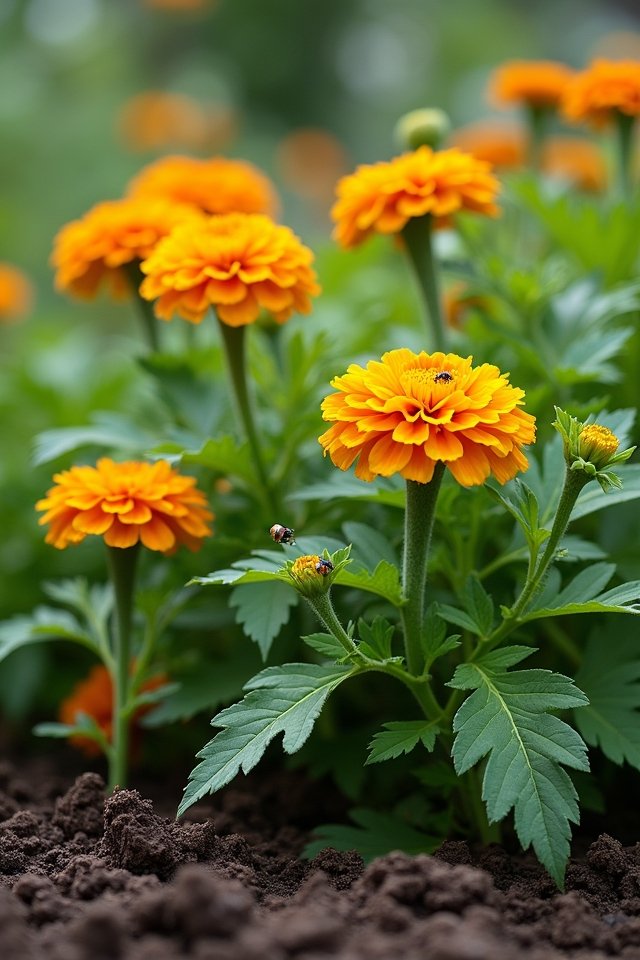
While it might seem like pests are just out to ruin your gardening dreams, a diverse garden can be your greatest ally in keeping those pesky critters at bay! By embracing biodiversity enhancement, you’ll create a natural ecosystem where beneficial insects thrive and pesky pests flee. Consider these innovative pest deterrence strategies:
- Partner up plants: Marigolds repel nematodes, while basil wards off flies.
- Attract allies: Ladybugs and lacewings love feasting on aphids—give them a cozy spot!
- Diverse layers: Mixing tall and short plants confuses pests, making your garden a safe haven.
- Nature’s aromas: Strong-scented herbs like mint can effectively mask other plants’ fragrances.
With all this, you’re not just gardening; you’re orchestrating an eco-friendly symphony!
Maximizing Space in the Garden
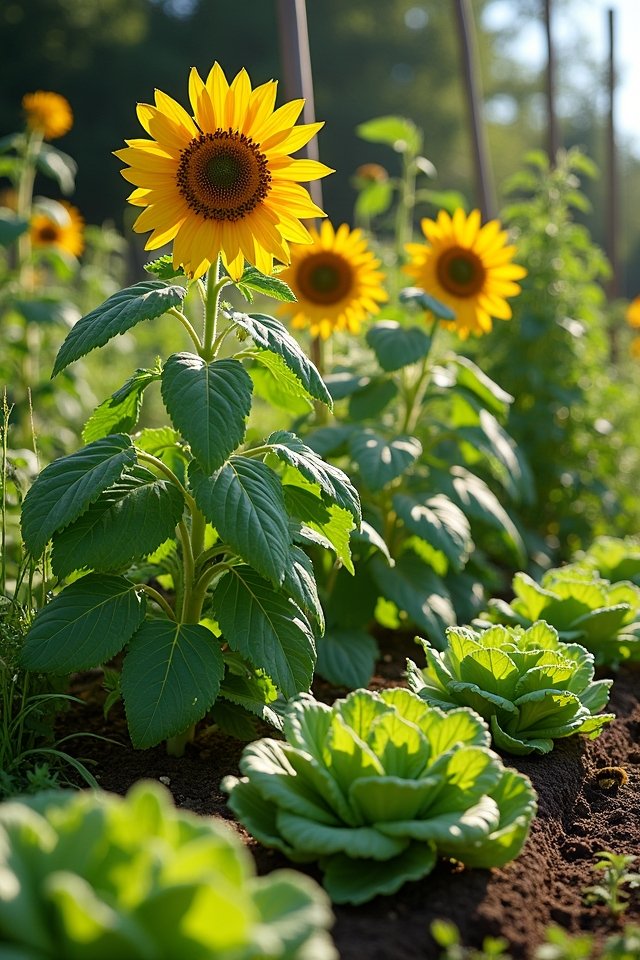
Get ready to transform your cozy corner of soil into a flourishing paradise, because maximizing space in your garden is like solving a delightful puzzle! Why let precious ground lie bare when you can reach for the skies? Vertical gardening techniques—think trellises and hanging planters—let you stack your plants up, creating a lush, green wonderland! Combine these with space-efficient layouts, and you’ll be amazed at how much you can grow. Imagine tomatoes climbing beside fragrant basil, or peas intertwining with lovely flowers. Your garden will not only be productive but also bursting with personality. So, quit fussing over those empty patches, and let your creativity sprout! It’s time to garden upwards and make every square inch count!
Tips for Successful Companion Planting
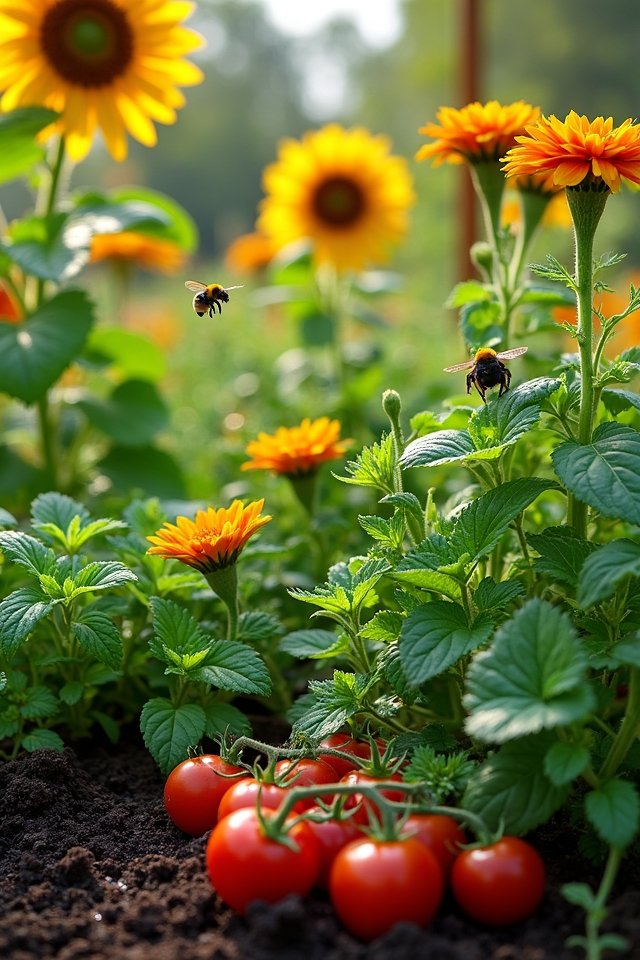
When it comes to creating a lush and vibrant garden, companion planting is like pairing the perfect wine with a delicious meal! To maximize your garden’s potential, focus on smart plant selection and an innovative garden layout. Here are some tips to get you started:
- Choose plants that thrive together, like tomatoes and basil—an aromatic duo!
- Mix pest-repelling flowers, such as marigolds, amidst your veggies. They’re nature’s bodyguards!
- Consider the height of your plants. Taller ones can provide shade for those that prefer a little cool!
- Rotate your companions each season to keep the soil rich and healthy.
Embrace the magic of companion planting, and watch your garden flourish like never before! Isn’t that worth a try?
Frequently Asked Questions
Can Companion Planting Be Used in Indoor Gardens?
Companion planting can thrive in indoor gardens! Just think about robust basil and delicate tomatoes cozied up together. These ideal pairings not only create a lush display but also boost flavors, like a culinary duet! With indoor compatibility, your space can bloom in harmony. Experiment with herbs and veggies for rocket growth, and don’t forget marigolds—they deter pests like little guardians! Why not let your indoor garden dance with life and flavor?
What Plants Should Never Be Companions?
When planning your garden, watch out for incompatible plants! Just like bad roommates, some combinations can be downright harmful. For instance, never pair tomatoes with potatoes; they’re like feuding cousins, stunting each other’s growth! Similarly, mint can be a sneaky invader, overpowering neighboring plants. These harmful combinations can lead to chaos in your garden, so choose wisely! Remember, harmony among your plants creates a thriving oasis, not a battleground! Happy planting!
How Long Does It Take to See Benefits?
You’ll usually spot benefits within a few weeks! Just keep an eye on your plants. For example, when you pair basil with tomatoes, those tomatoes grow bigger and tastier. It’s like a winning team—each plant lifts the other! During your growth observation, look for vibrant colors and healthier leaves. If your plants thrive together, you’re on the right track! So, watch closely, and you’ll revel in the fruit of your labor!
Is Companion Planting Suitable for All Climates?
Is companion planting suitable for all climates? Absolutely! This technique boasts fantastic climate adaptability, thriving in many regions! For instance, basil loves sunny spots, but in cooler areas, you might pair it with heat-loving tomatoes for mutual success. Just remember, regional variations play a role! Your local weather can turn your garden into a lush paradise or a dry desert. So, tailor your pairings, and you’ll have a colorful, bountiful garden! Isn’t that exciting?
Can I Use Companion Planting in Containers?
Absolutely, you can use companion planting in containers! Think about delightful container combinations, like vibrant basil with sunny tomatoes. They not only boost each other’s flavors but also use space efficiently. With limited room, you’re creating a mini ecosystem! Imagine the joy of harvesting fresh herbs that enhance your dishes. Plus, watching them thrive together feels like a garden party in a pot! So go ahead, mix and match those beauties for a colorful spectacle!


